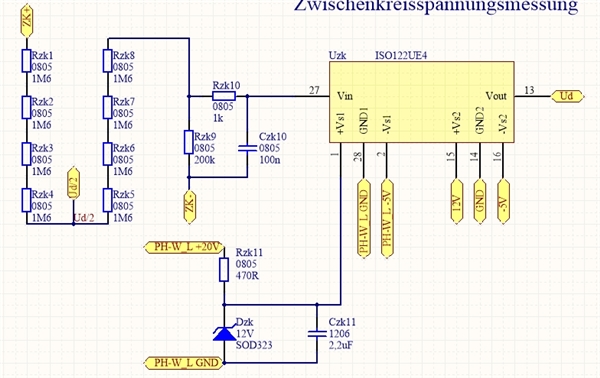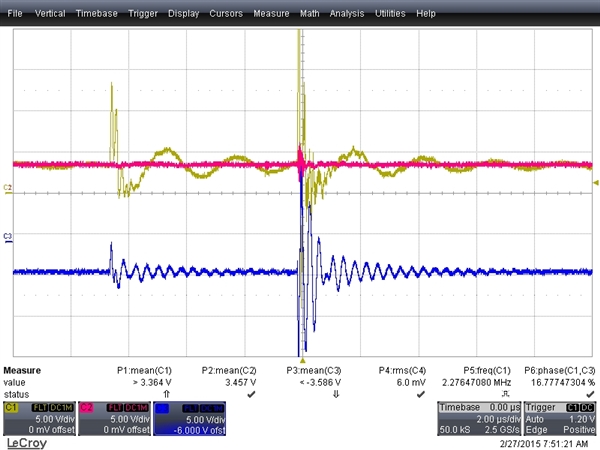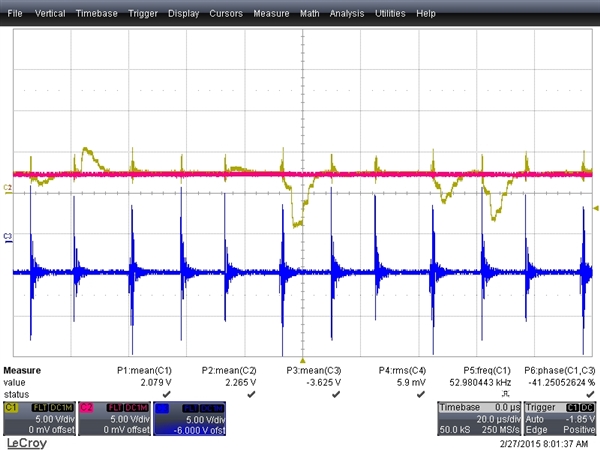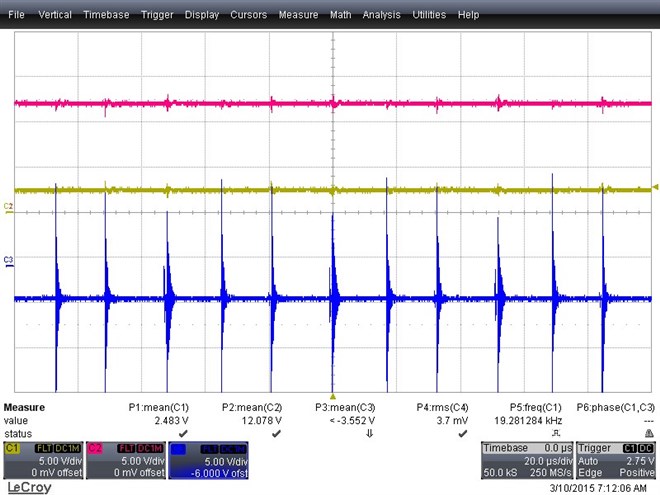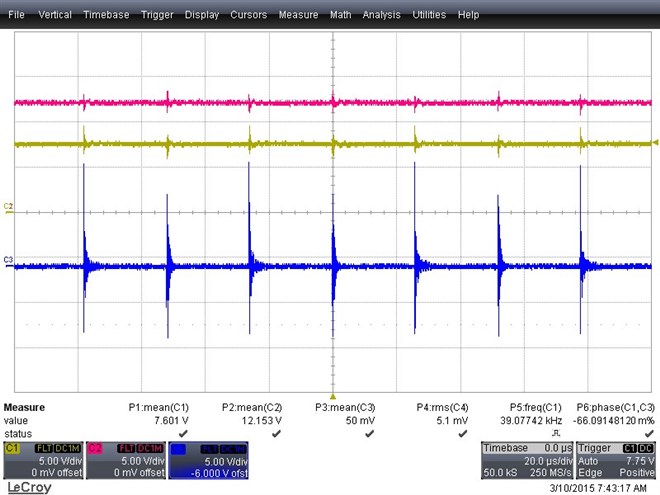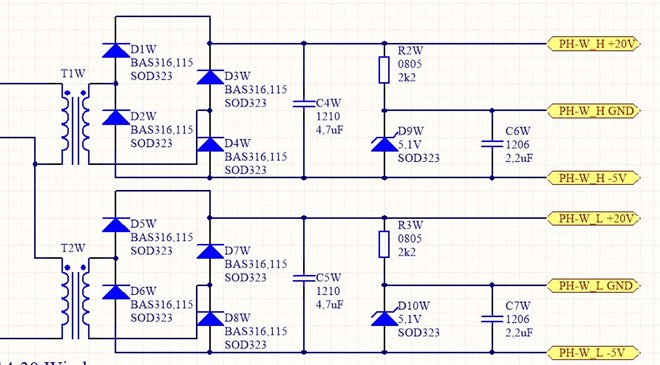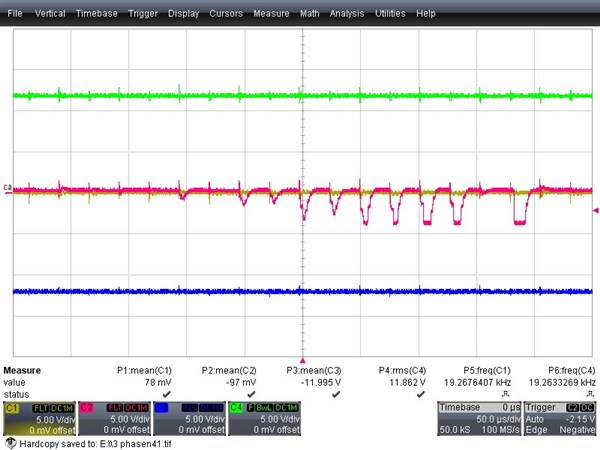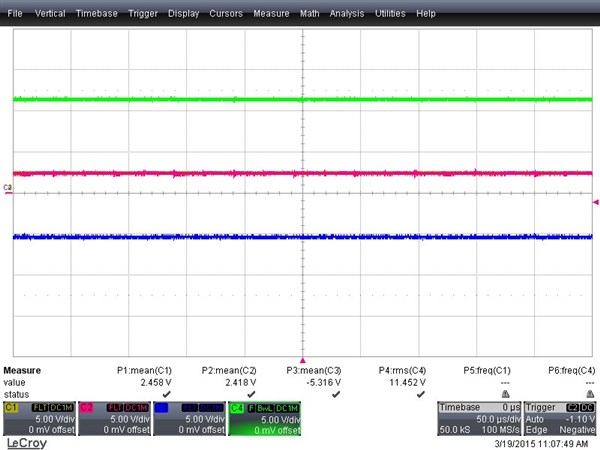Hello,
I am currently using an ISO122 in my three phase inverter.
The device is used to measure the DC link voltage and transmit a proportional analogue signal to galvanically isolated low voltage side of the inverter.
This is the schematic. A lowpass filter is located right after the voltage devider.
The blue voltage is the stabilized -3,3V (by Zener) supply voltage of the ISO122 (not in schematic included).
Yellow is the output of the voltage devider and red is the signal after the lowpass filter.
On the second picture blue is still the -3.3V supply and yellow is the output of the ISO122. (red can be ignored, as it is the heavily filtered yellow signal).
So my problem is why converts the ISO122 the red signal from picture 1 into this disturbed yellow signal of picture 2? I guess i have got some EMV issues but I am not sure where and which one. The Mosfets of the inverter are operated by 20kHz, so EMV is definitively a problem. If the PMW for pulsing the Mosfets is off, everything is fine.
Do you have any idea how I can improve the reliability of the ISO122 on my board? Do i have to add more capacitance at power supply? Or is the ISO122 simple not useable for my environment (20 kHz traction inverter)?
Thank you for any help!
Best wishes!
Thomas


